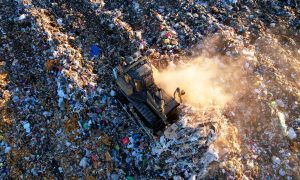Plastic waste is a major environmental problem, and it’s essential that we all play our part in reducing it. Recycling plastic correctly is an important step in the right direction. However, many people are not experts in sorting and still have doubts, when it comes to the recycling of plastic items consisting of different materials. In this blog, we will go over the basics of plastic recycling and provide tips on how to recycle plastic for a more sustainable future properly.
OECD estimates suggest that the number of plastic products and waste will triple by 2060, while the recycling rate will only see a slight increase. Despite the plastic industry discussing recyclable packaging for the past few decades, most plastics remain unrecyclable worldwide, even after 30 years. On average, the official recycling rate of plastic packaging is reported to be around 10%, varying from country to country. In recent years, the US has witnessed a decline in plastic recycling, falling from 9% in 2018 to 6% in 2021, due to the discontinuation of plastic exports to China, where mixed plastic packages were reportedly recycled but ended up in landfills.
Know your plastics:
Not all plastic is created equal, and it’s important to know what types can be recycled. Look for the recycling symbol, usually found on the bottom of the product, and identify the number inside the symbol. This number corresponds to the type of plastic, and not all types are recyclable.
One of the main problems of sustainable waste management nowadays is that currently there are seven different common types of plastics in the consumer market:
- 1) Polyethylene Terephthalate (PET or PETE)
- 2) High-Density Polyethylene (HDPE)
- 3) Polyvinyl Chloride (PVC or Vinyl)
- 4) Low-Density Polyethylene (LDPE)
- 5) Polypropylene (PP)
- 6) Polystyrene (PS or Styrofoam)
- 7) Other
The problem with more types of plastic was comprehensively explained on a Netflix show Down to Earth with Zac Efron (S02 E05 Waste).
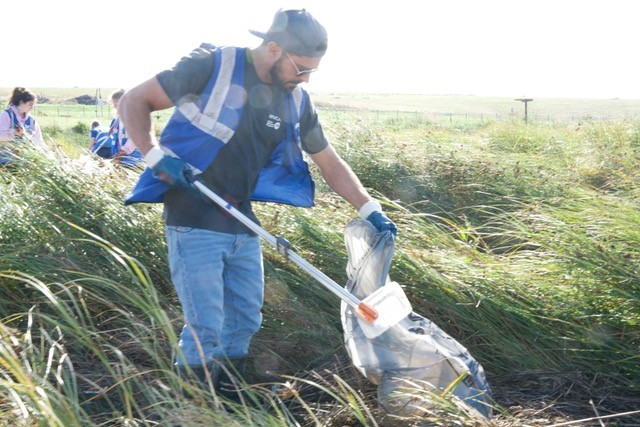
Recycling plastic is not as simple as just tossing a plastic item in the recycling bin. While glass, aluminum, paper, and cardboard are straightforward to recycle, plastic is a bit more complicated.
Most cities can only recycle plastics with the numbers one or two, which are typically used for items like water bottles and milk jugs. Plastics with numbers three through seven, such as yogurt cups, plastic bags, and take-out containers, require special facilities for recycling. If these items are put in the regular recycling bin, they may end up being incinerated or sent to the landfill.
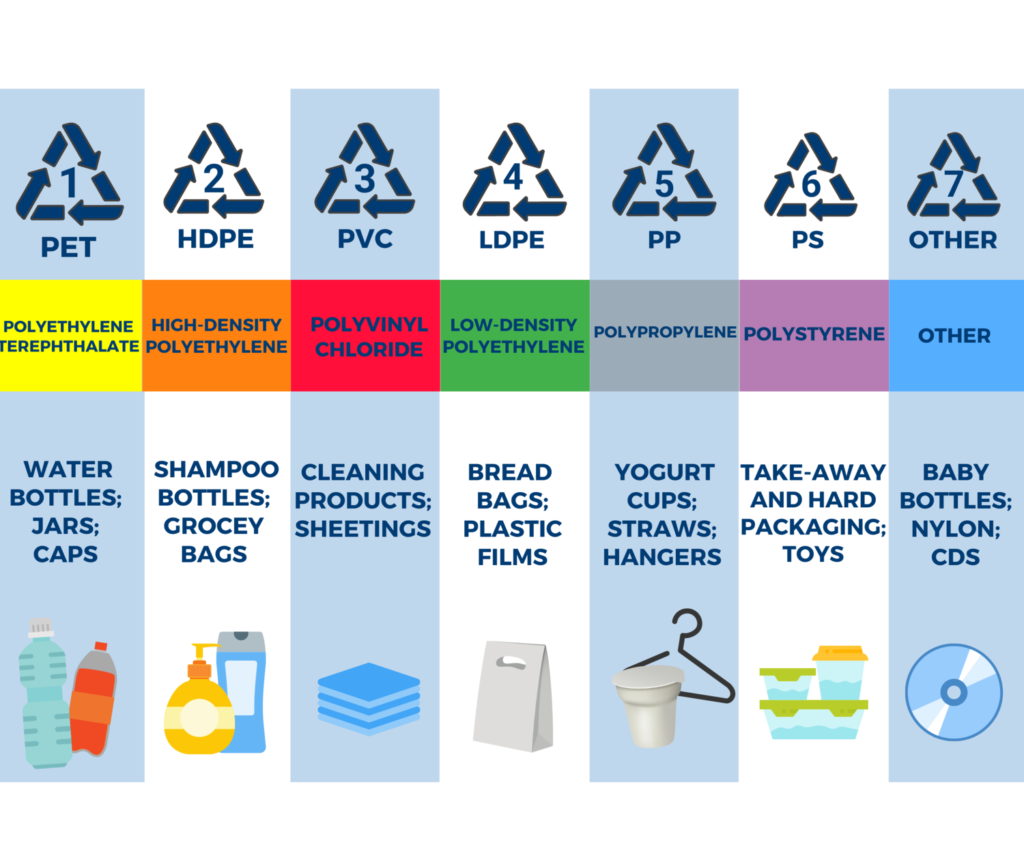
Thin plastic items like plastic film, flexible packaging, and snack bar wrappers are often not accepted by recycling programs because they can jam up machinery. However, many retailers now have in-store drop-off bins specifically for these types of plastics. These bins are taken to special facilities equipped to recycle thin plastics, so they can be turned into new products like park chairs.
If you want to recycle plastic properly, it’s important to know what your local recycling program accepts. You can also check with your local retailers to see if they have in-store drop-off bins for hard-to-recycle plastics. By taking these small steps, we can all do our part to reduce waste and protect the environment.
Clean and sort:
Before recycling, it’s essential to clean and sort plastic items. Remove any labels or stickers, and wash out any food or liquid residue. Sort by type of plastic to ensure that each material is recycled properly.
Read more in our other blog article about The Great Recycling Myth and why sorted plastic claimed to be recycled is not always recycled in a proper way.
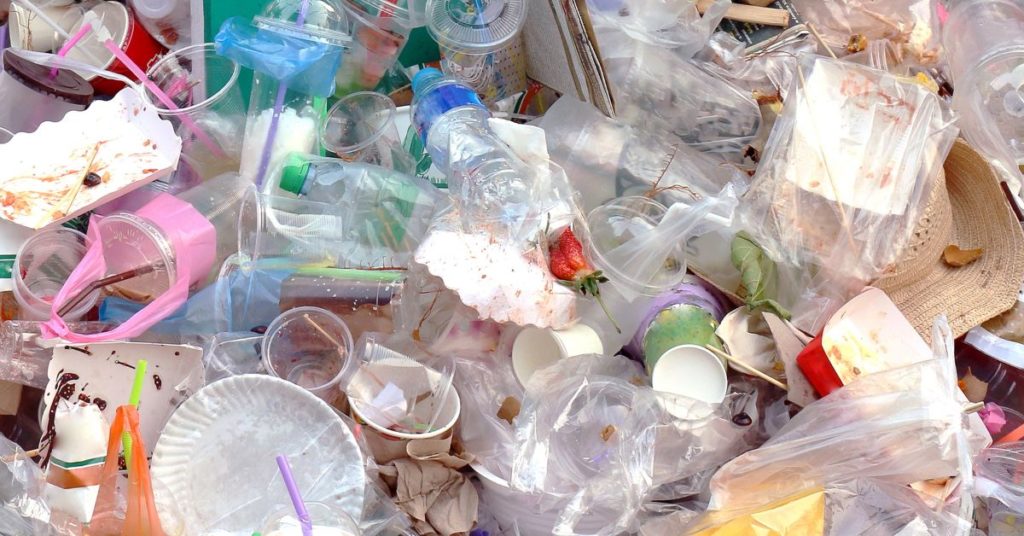
Check local recycling regulations:
Recycling regulations vary by city, so it’s important to check what types of plastic are accepted in your area. Some communities only accept certain types of plastic, while others have stricter regulations on what can be recycled. For instance, in some cities, waste collectors collect also paperboard materials like milk packaging together with plastic waste, others are using specific containers for this waste stream.
Reduce and reuse:
Before recycling, consider reducing the amount of plastic you use. Bring your own reusable bags, water bottles, and containers to avoid single-use plastic. Reusing plastic items instead of throwing them away is also a great way to reduce waste.
Proper disposal:
Plastic items that cannot be recycled or reused in any way, such as plastic bags, should not be placed in your recycling bin. Instead, they should be taken to a local grocery store or recycling center for proper disposal. Another example of a good “non-disposal” may be in countries with implemented DRS (Deposit Refund System). For instance, in Germany students partying in the city streets use to leave empty beverage packaging on the street next to the bins, because they know that the bottles will be collected by homeless people who can this way earn the money and clean the streets. So if you are living in a country with a functioning DRS and you do not have a chance to deposit the bottle in an RVM (Return Vending Machine), it is better not to crush it. There is a high probability that your bottle will help some other people who will redeem it. Thus, leave it standing intact next to a plastic waste bin and it will be either collected by other citizens or by a waste collection company during the regular garbage pick-up.
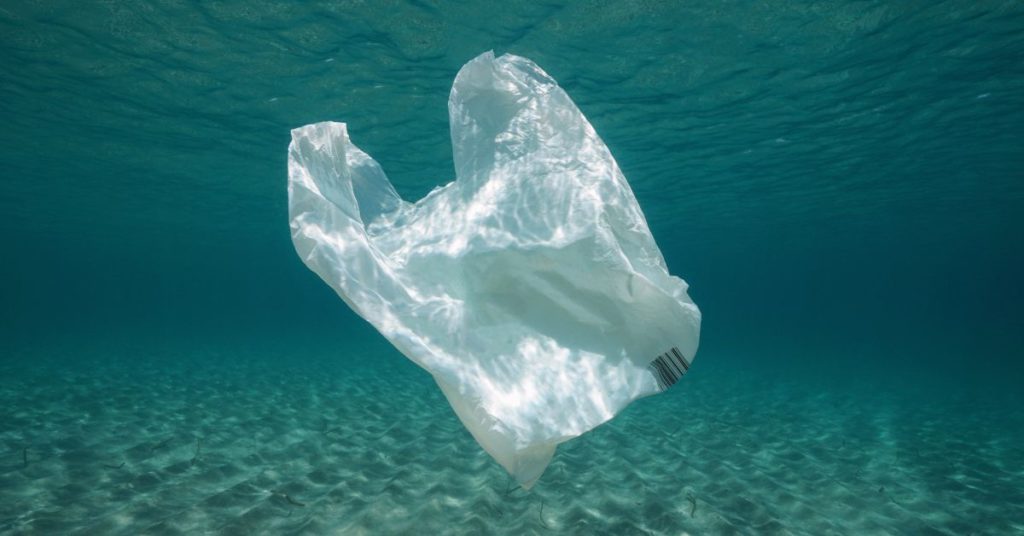
In conclusion, proper plastic recycling is essential for a cleaner, more sustainable future. By following these simple steps, you can do your part in reducing plastic waste and promoting a greener planet. Our smart waste management company Sensoneo is dedicated to providing efficient and sustainable waste management solutions, and we are committed to making a positive impact on the environment.


